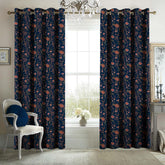Vintage Telephone and Its History: A Journey Back in Time
21 Feb 2025
With millions of sleek smartphones in the circulation today, there’s of course no denying the fact that the vintage telephone has a certain alluring charm among its users. These ancient devices serve as backup stones without the help of technology but serve as documentation of advances still more than that, it entails the history, composition and artistry which has hardly been incorporated in modern day devices. We were once talking about the vintage telephones and their journey from a few pieces over the counter to today where they are valuable collectible items from various manufacturers.
The advent of the telephone is credited with numerous useful changes overtime for humanity.
Telephone development is mostly attributed to Alexander Graham Bell who makes it clear that the telephone or telephone, as it is referred to in modern usage, cannot be built without this partial invasion into private space. IT looked on those early days that people barely touched the cell phone. The initial models were vastly distinct from today's handheld units. Instead, they were bulky, awkward devices where users spoke into a mouthpiece and listened through an earphone. Still, these primitive devices were incredibly advanced in being able to transmit sound over electric wires regardless of the distance, transforming the interaction between people forever.
Pay Phones and Trojans, Which Hailed in the Cradle Phone Style
The candlestick phone is one of the most widely used vintage telephone design that became the toast and themc’s in the early 1900s. This telephone set is generally designed in an upright manner. The mouthpiece is fixed on the top of a slender stick while the receiver is held by the user separately to the ear. Most candlestick phones would come with touchpad rotaries and alongside those were used a lot in houses and offices in the 1940s, it became a trademark of opulence and advancement.
Equalus d completed desktop telephones style appearance was the wall crank phone. How cryptic and ion the ironi to the uted phone that we have now days they were some crazy clunky phones that worked by cranking to call. To make that call, the receiver had to be cranked in order for the call to go through. Turning the crank would attract the help of an operator, although the call would still have to be placed. There were also operators, whom we would not consider as critical since there were no computerized call direction for concerning systems at first.
The Rise of Rotary Phones
In the 1920s and 1930s, the rotary dial telephone became the dominant type of telephones used around the world in homes and workplaces. This was also the time when telephones advanced from huge boxes being used for calling into more compact and well-designed objects. Through the round dial cut with numbered holes, a person was able to make a call without the services of an operator. It made things a lot easier, and pets too, for it was a whole new world of advancement.
The rotary phones back in the day were usually housed in a case fashioned from Bakelite, one of the first plastics to emerge, which made the phones more resilient and sophisticated looking. The sound of the rotary dial being turned with that of a click when it shifted back to the original position, has to be the sound that no one forgets even after the passing of many years.
Mid-Century Designs: Colors And Re-Writing Concepts
The idea of a ‘phone’ began to transcend the fundamental need for communication during the 1950s and 1960s. It superseded merely being a device for communication and was transformed into an ornament in houses. Turntables were integrated into the handle in their new outline phones 1962-western electric company. Manufacturer of telephones of this period, western electric, added so many different colors ranging from light pinks and blues, deep reds and greens to fat pastels, which helped people with the choice of their telephone color coordinating with the interior of the house. The decade also introduced the touch tone phone, which replaced the rotary dial with buttons to speed up the process of dialing.
As time went by, the phones were invented that were small, light and affordable to the majority. Instead of the former chunky models attached to walls, thin versions could be 'executed’ in ‘desktop’ format and very often kept in everyday living rooms or corridors where it became the coupler of social events.
The End of an Era: Landline Phones Go Extinct
Landline calls began to go out of the picture with the popularity of mobile phones and wireless communication systems in the late 20th century. Over the years, there were rotary and push-button phones in many homes into the 1990s, but there were not as many telephones as there were once cell phones and digital forms. By the 2000s, those adorned with the vintage telephones were mainly for exhibition, rather than for use at home.
Nonetheless, they are able to prompt feelings of nostalgia. Many phone lovers and collectors appreciate older telephones for their beautiful designs and details. Whether it’s a commendatory warmed-up phone, a candlestick phone or a cyclic crank wall phone, they are treasured as these remind of the glorious past and those simpler days into which people still yearn.
Why Collect Vintage Telephone?
Collecting landline telephones has turned out to be a fast emerging type of hobbies. For most of us, it is not only satisfaction of being able to touch history but also the appreciation of the art and the impact of technology which is involved in its manufacture. One can differentiate items with gadgets because, after a few years of use, most are made to throw away. Vintage phones are prudently made from good materials and the internal mechanical parts are repairable and meant to be up kept rather than thrown out.
Moreover, vintage telephones can be rather misleading as they also serve the purposes of in modern households as great talking points. If they serve as an accessory on the top of the side table or completely stripped down and put into use, they are an addition of the old school glamour to the place. To some people, these are the very reasons why they want to keep one of these antique phones, to escape the modern day gizmos and come back into an era where communication was more about the words, slower and paced.
Conclusion: The Future of the Vintage Telephone
The vintage telephone is more than a relic of the past, it is the history of progress in technology, design and society. And we can’t help but suppose that calling someone and talking to them as well as the telephone itself was not something trivial from the first dainty candlestick models to juicy geared rotary phones of the fifties. A satisfaction of memory or many sequential memories, vintage telephones are appealing as how they are situated or placed future sculpture head kits or future head pillar app history books.







